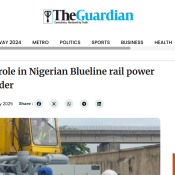
Energy Subsidy Reforms in Nigeria: An ADVAD Study
Energy subsidies have wide-ranging economic consequences. While aimed at protecting consumers, subsidies aggravate fiscal imbalances, crowd out priority public spending, and depress private investment, including in the energy sector. Subsidies also distort resource allocation by encouraging excessive energy consumption, artificially promoting capital-intensive industries, reducing incentives for investment in renewable energy, and accelerating the depletion of natural resources. Most subsidy benefits are captured by higher-income households, reinforcing inequality. Even future generations are affected by the increased damaging effects of energy consumption on global warming.

Energy subsidies are pervasive and impose substantial fiscal and economic costs in most regions. On a ―pre-tax‖ basis, subsidies for petroleum products, electricity, natural gas, and coal reached $480 billion in 2011 (0.7 percent of global GDP or 2 percent of total government revenues). The cost of subsidies is especially acute in oil exporters, which account for about two-thirds of the total. On a ―post-tax‖ basis—which also factors in the negative externalities from energy consumption—subsidies are much higher at $1.9 trillion (2½ percent of global GDP or 8 percent of total government revenues). The advanced economies account for about 40 percent of the global posttax total, while oil exporters account for about one-third. Removing these subsidies could lead to a 13 percent decline in CO2 emissions and generate positive spillover effects by reducing global energy demand.
Country experiences suggest there are six key elements for subsidy reform and they include but are not limited to the following:
(i) a comprehensive energy sector reform plan entailing clear long-term objectives, analysis of the impact of reforms, and consultation with stakeholders;
(ii) an extensive communications strategy, supported by improvements in transparency, such as the dissemination of information on the magnitude of subsidies and the recording of subsidies in the budget;
(iii) appropriately phased price increases, which can be sequenced differently across energy products;
(iv) improving the efficiency of state-owned enterprises to reduce producer subsidies;
(v) targeted measures to protect thepoor; and
(vi) institutional reforms that depoliticize energy pricing, such as the introduction of automatic pricing mechanisms.





Hey people!!!!!
Good mood and good luck to everyone!!!!!
Hey people!!!!!
Good mood and good luck to everyone!!!!!
Concerning some sort of exploratory meals lover keen to engage in culinary explorations anywhere, ones culinary carry-on pack is ones vital gear, catapulting some sort of inner foodie onto a international platform. This groundbreaking device elevates their enthusiasm for creating meals foods, converting every destination into a dynamic culinary arts arena. Imagine delving into ones dynamic street foods market in a unknown put, wherein their bag’s protected chambers guarantee that your pre bought contents stay crisp. Imagine all by yourself joining in a dishes prep workshop in will rolling mountains of a forex setting, with that book bag cleverly set up using specific sections For the their culinary essentials, these types of as elements, items, and meal playing cards, enabling their contribution at confidence.
small handbag
Light & Waterproof Backpacks and Top Picks for 39c0_c1
Upgrade Your E-Unicycle for Boosted Efficiency
Improving your e-unicycle can significantly boost its capability, delivering a smoother and more enjoyable trip. One of the most effective upgrades is increasing the battery capacity. Higher capacity batteries offer extended range and better efficiency, allowing for longer rides without frequent recharging. Think about replacing your existing battery with a higher watt-hour (Wh) option compatible with your unicycle model. Enhancing the motor is another way to improve performance. Motors with higher wattage provide greater speed and torque, turning it easier to navigate steep inclines and rough terrains. Make sure the new motor is compatible with your unicycle’s frame and battery system. Upgrading the suspension system can improve ride comfort, especially on uneven surfaces. Seek high-tech suspension kits designed for your specific unicycle model. These kits often include shock absorbers and improved mounting systems. Pedal upgrades can also turn a significant difference. Wider, more ergonomic pedals offer better foot support and reduce fatigue during long journeys. Some aftermarket pedals come with improved grip surfaces, enhancing stability. Lastly, think about adding connectivity aspects like Bluetooth modules. These enable you to monitor performance, customize settings, and receive real-time diagnostics via a smartphone app. These upgrades not only enhance efficiency but also extend the lifespan of your e-unicycle.
INMOTION V10 V10F Series
Linking to Digital Tools and E-Unicycles and Tech a39c2_0